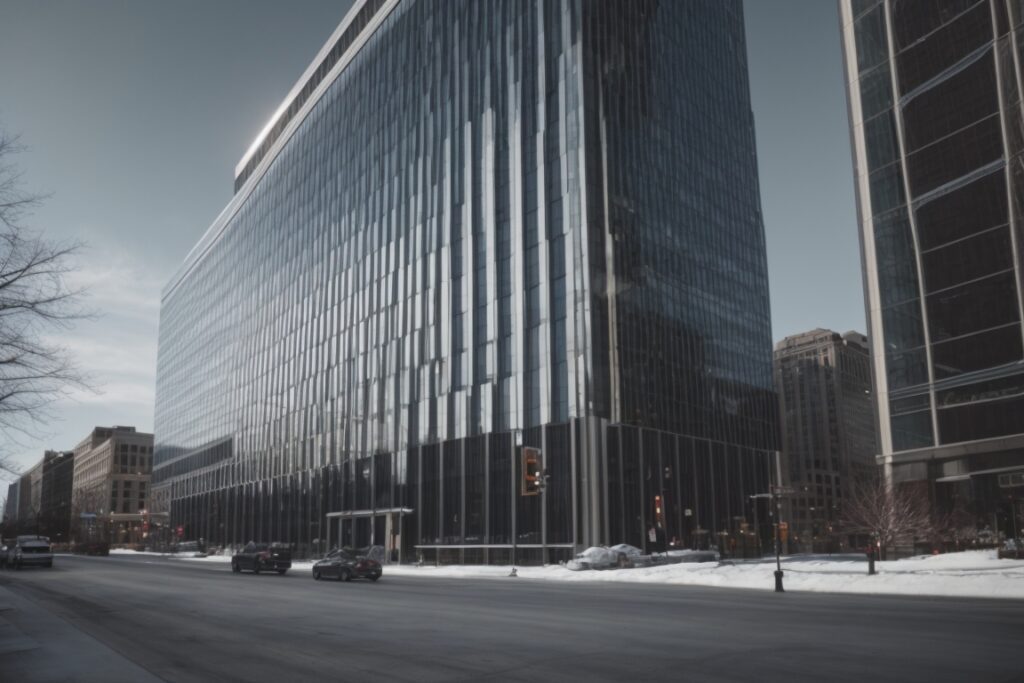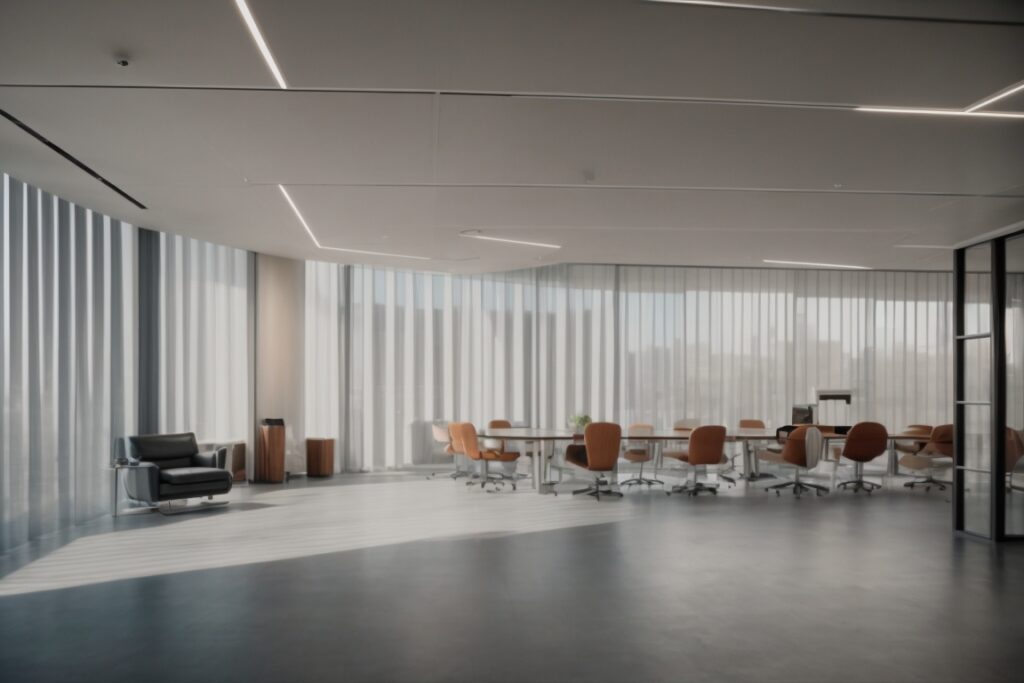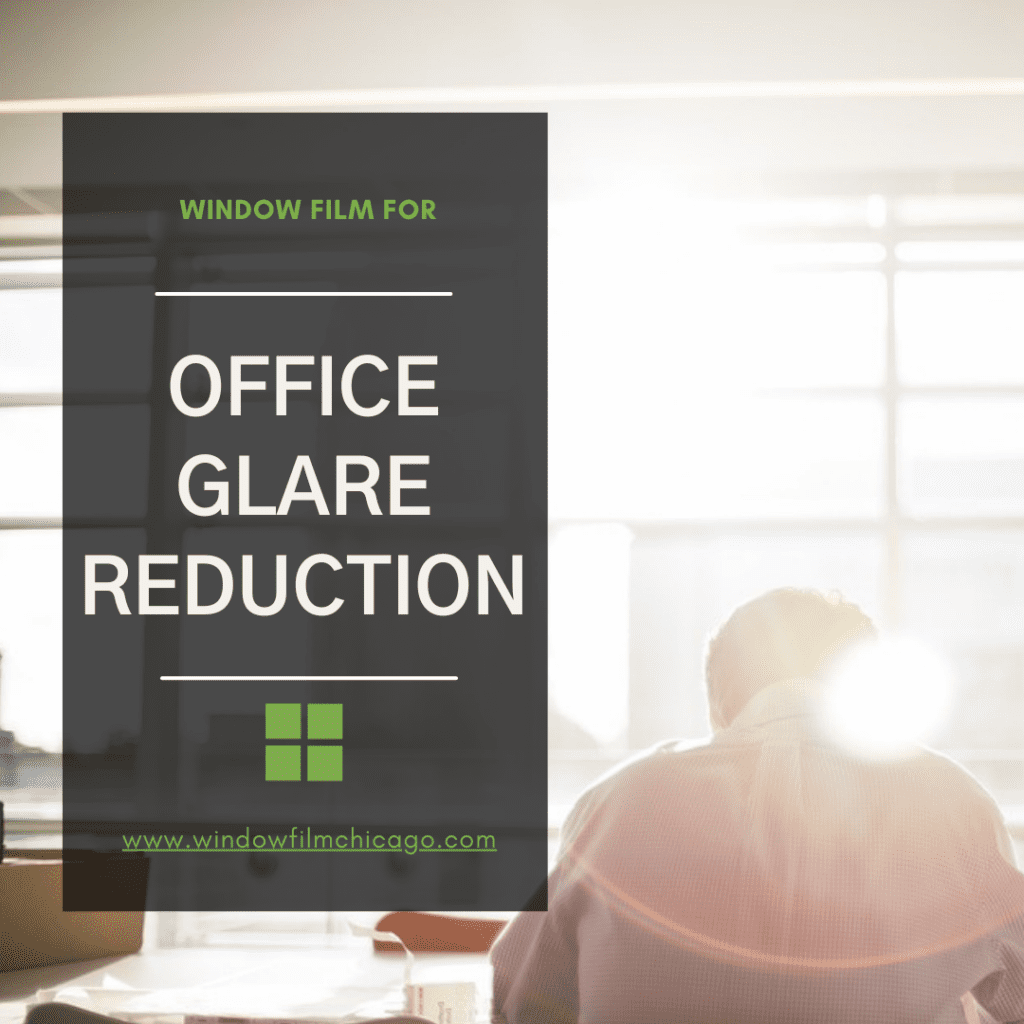
Understanding the Blast of Urban Heat in Chicago
Chicago, often celebrated for its magnificent skyline comprising countless skyscrapers, confronts a widespread yet underrecognized environmental challenge known as the Urban Heat Island (UHI) effect. This phenomenon occurs when urban structures, like skyscrapers, absorb and re-radiate the sun’s heat more than natural landscapes such as forests and water bodies. One innovative solution gaining traction is the use of heat reduction window film in Chicago’s buildings to mitigate these effects.
The UHI effect elevates outdoor temperatures in urban areas, significantly affecting energy consumption, elevating greenhouse gas emissions, and compromising human health and comfort. During summer, as Chicago’s temperatures soar, the heat retained by buildings exacerbates the warmth, creating discomfort for its residents. While many might not realize the intensity and implications of this urban heat, its impact on daily life and the environment is profound.
Heat reduction window film offers a practical response to this issue by reflecting solar energy away from buildings, thus contributing to a cooler urban environment. However, despite its benefits, awareness about this effective intervention remains relatively low among the city’s populace and urban planners. The application of such technologies is pivotal in transforming Chicago’s architectural landscapes into more sustainable and livable environments.
As we explore deeper into the nuances of urban heat management, it becomes clear that a broader understanding and implementation of heat reduction strategies, including the adoption of heat reduction window films, are crucial for sustaining Chicago’s environmental and public health. It’s essential for stakeholders to recognize the potential of such innovations in making urban life more comfortable and sustainable.
Exploring the Heat Island Effect in Chicago
Chicago, known for its impressive skyline filled with towering skyscrapers, faces a significant and growing environmental challenge known as the Urban Heat Island (UHI) effect. This phenomenon occurs when urban areas become significantly warmer than their rural surroundings, primarily due to human activities and extensive amounts of concrete and asphalt, which absorb and retain heat. During summer months, this issue becomes especially pronounced, turning the city into a giant heat reservoir, which can lead to increased energy consumption, heightened emissions, and exacerbated public health issues.
This problem is not merely an inconvenience; it’s a systemic issue that affects every resident of Chicago. The primary culprit contributing to the UHI effect is the inefficient architectural design that includes glass-fronted buildings, which significantly increase solar gain within the city. In this context, heat reduction window films emerge as a potential mitigator by reducing the amount of heat these buildings absorb and thereby helping manage the city’s overall temperature.
Startling Statistics on Urban Heat and Window Films in Chicago
In Chicago’s urban landscape, towering skyscrapers contribute to the Urban Heat Island effect, increasing temperatures dramatically compared to rural areas. This phenomenon leads to average temperature spikes by up to 7°F. Interestingly, research shows that installing heat reduction window films can reduce indoor temperatures by up to 8°F in these buildings, significantly curbing air conditioning use and enhancing energy efficiency. By adopting heat-reductive window treatments, buildings in Chicago have reported nearly a 5% decrease in energy costs annually.
The Urban Heat Burden: Why Heat Reduction Window Film is Essential for Chicago’s Residents
In Chicago, the effects of the urban heat island phenomenon present a pressing problem for its residents, especially during the sweltering summer months. Urban environments like Chicago’s densely packed cityscape absorb and re-emit the sun’s heat more than rural areas, significantly increasing temperatures. This escalation not only makes the city warmer but also exacerbates the discomfort and health risks for its inhabitants.
The primary issue here is the intense heat absorption by buildings, particularly skyscrapers, which then affects the indoor environment, making living and working spaces uncomfortably hot. Traditional glass windows contribute to this problem by allowing solar radiation to penetrate, thereby elevating the room temperature. This not only leads to discomfort but also pushes the dependency on air conditioning systems, leading to higher energy consumption and, consequently, increased utility bills for residents and business owners alike.
Moreover, the increased reliance on air conditioning not only affects personal finances but also contributes to the city’s overall energy demand, putting a strain on energy resources and escalating greenhouse gas emissions. Such environmental implications highlight the importance of addressing this heat accumulation issue as a critical urban challenge. The introduction of heat reduction window film can significantly mitigate these problems by enhancing window insulation and reducing solar heat gain.
Without addressing the excessive indoor heating caused by ineffective window insulation, Chicagoans face not only increased living costs but also an elevated risk of heat-related health issues, such as heatstroke and dehydration. The problem is a complex interplay of environmental, health, and economic factors that necessitate a practical and efficient solution.
Understanding the Problem: Urban Heat in Chicago
The phenomenon known as the Urban Heat Island (UHI) effect primarily affects metropolitan areas like Chicago, where the concentration of buildings, vehicles, and human activities significantly elevates temperatures compared to surrounding rural areas. The core issue stems from the vast expanses of asphalt, concrete, and high-density structures, which absorb and retain heat. This results in elevated energy costs, increased air pollution levels, and greater health risks, especially during the sweltering summer months.
Heat reduction window film offers a pertinent solution to mitigate these issues by blocking significant amounts of infrared rays responsible for heat build-up. Understanding this problem is crucial for residents and building managers to make informed decisions about how to effectively combat the UHI effect in Chicago, enhancing both comfort and sustainability in their living and working environments.
How a Chicago Office Tower Reduced Cooling Costs with Heat Reduction Window Film
In Chicago’s bustling downtown, a prominent office tower struggled with excessive heat gain during the summer months, leading to soaring air conditioning costs and uncomfortable working conditions. The management decided to install heat reduction window film, which significantly lowered the building’s internal temperatures. Within the first year of installation, the building reported a 20% reduction in cooling costs. This case effectively illustrates the immediate benefits of using heat reduction window film in urban high-rises.
The Risks of Neglecting Heat Reduction in Chicago’s Skyscrapers
Ignoring the need to implement heat reduction window films in Chicago’s skyscrapers can lead to a variety of significant negative consequences, especially considering the urban heat island effect prevalent in the area. Overlooking this critical adjustment can indeed be costly and detrimental.
Firstly, the internal temperature of buildings without heat reduction window films can dramatically increase, leading to increased reliance on air-conditioning systems. This not only results in higher energy consumption but also significantly boosts the energy costs for the building management. Overtime, these elevated operational costs can become a substantial financial strain.
Moreover, the comfort and productivity of individuals working or residing in these skyscrapers can be severely compromised. Excessive heat can lead to discomfort and health issues such as heat stress or even heat exhaustion.
Lastly, ignoring the potential of heat reduction window films impacts the sustainability efforts of the city. As buildings consume more energy for cooling, it increases carbon emissions, contradicting Chicago’s goals for environmental responsibility and sustainability.
Economic Impacts of Ignoring Heat Reduction Window Film in Chicago
Failing to install heat reduction window film in Chicago can significantly affect homeowners economically. In urban settings like Chicago, the increased heat absorption by buildings without protective films leads to higher air conditioning needs. This surge in energy consumption not only spikes utility bills but also adds strain on HVAC systems, leading to frequent repairs or replacements and diminishing their lifespan. The cumulated cost of neglecting this preventative measure can result in substantial financial burdens over time.
Heat Reduction Window Film: A Strategic Solution for Chicago’s Urban Landscape
In urban environments like Chicago, the challenge of combating the urban heat island effect is significant. This phenomenon, where developed areas become significantly warmer than their rural surroundings, can lead to increased energy costs and environmental strain. Heat reduction window film offers a targeted solution to address these issues, specifically tailored to the needs of Chicago’s skyscrapers and residential buildings.
The application of heat reduction window film on the extensive glass surfaces of Chicago’s buildings can significantly diminish the amount of heat entering through windows. This reduction in solar heat gain not only helps to maintain cooler indoor temperatures but also reduces the dependency on air conditioning systems during the hot summer months. The result is a substantial decrease in energy consumption and, by extension, lower utility bills for building owners and tenants alike.
Moreover, this window film technology is not just about heat management; it also offers additional benefits like reducing glare and protecting against UV radiation, which can fade furniture and harm skin. By addressing these common urban issues, heat reduction window film positions itself as a multifunctional product tailored for the unique challenges faced by a bustling metropolis such as Chicago.
Thus, the introduction of heat reduction window film into Chicago’s architectural fabric is not merely a matter of improving individual building performance but is a step towards enhancing the city’s overall sustainability and livability. This makes it an invaluable investment in the city’s future, promoting a cooler, more energy-efficient environment in one of America’s most iconic urban landscapes.
Heat Reduction Window Film in Chicago’s Urban Landscape
Heat reduction window film offers a practical and efficient solution for combating the urban heat island effect observed in Chicago’s dense skyscraper environment. By applying this specialized film directly to the windows of buildings, it significantly minimizes solar heat gain, which in turn reduces the need for air conditioning during the warm months. This not only helps in controlling indoor temperatures but also contributes to a substantial decrease in energy consumption.
The window film works by reflecting and absorbing a portion of the incoming solar energy, thus keeping the buildings cooler and more comfortable without blocking natural light. This technology is especially beneficial in a bustling city like Chicago, where glass skyscrapers are abundant and can contribute to elevated urban temperatures. Additionally, the heat reduction capabilities of the film help mitigate the effects of heatwaves, making it an essential component of urban architectural planning toward more sustainable living conditions.
Beyond its primary function, the window film also provides protection against UV rays, which helps in prolonging the life of interior furnishings and decreases the risk of UV-related fading. This dual purpose—enhancing both comfort and protection—makes heat reduction window film a valuable addition to any high-rise building in Chicago.
Advantages of Heat Reduction Window Film in Chicago Skyscrapers
Heat reduction window films provide various significant benefits for Chicago’s skyscrapers, particularly in combating the urban heat island effect. These films help decrease indoor temperatures, ensuring more comfortable living and working spaces without over-reliance on air conditioning. This, in turn, leads to considerable energy savings and reduced utility costs. Moreover, the window films also block harmful UV rays, protecting occupants from potential skin damage and reducing the fading of interior furnishings. The environmental impact is also notable, as reduced energy consumption directly correlates with lowered carbon emissions.
Success Stories: How Chicago Businesses Improved Comfort and Efficiency with Heat Reduction Window Films
One standout success story from Chicago involves a prominent downtown skyscraper, often plagued by excessive heat due to its extensive glass facade. After installing heat reduction window film, the building managers reported a substantial decrease in solar heat gain, leading to a more comfortable environment for its occupants and a significant reduction in their cooling costs. This move not only enhanced comfort but also improved the building’s energy efficiency rating, making it a greener operation.
Another noteworthy testimonial comes from a Chicago retail store on Michigan Avenue, which struggled with high indoor temperatures and glare affecting its shoppers’ experience and merchandise. Once the heat reduction window film was applied, the store experienced a remarkable transformation. The internal temperatures dropped, and the reduced glare led to a better shopping environment and greater customer satisfaction. The store owner noted an uptick in repeat customers, attributing this change directly to the more pleasant shopping ambiance created by the new window films.
Case Study: Modern Office Environments Implementing Heat Reduction Window Film in Chicago
In downtown Chicago, a prominent accounting firm faced severe discomfort due to intense solar heat penetrating their skyscraper offices. After installing heat reduction window film, they reported a significant 40% decrease in indoor temperatures during summer, which also resulted in lower cooling costs and enhanced employee comfort. This transformation not only boosted productivity but also contributed to their sustainability goals. If you’re in Chicago and facing similar issues of urban heat, contact us today to discover how our window films can benefit your building!






About The Author: Mike Kinsey
Mike Kinsey has more than a decade of experience installing window film in the Chicago area. His years of experience have allowed him to develop a deep familiarity with all of the different types and styles of window film on the market including the various security, privacy, decorative, and energy efficient options. Together, he and his team have completed hundreds of commercial and residential installs, totaling an accumulation of over 250,000 square feet. In addition to being an expert on top brands such as LLumar, C-Bond, HDClear, Solar Gard, Solyx, and Huper Optik, Mike is also certified by 3M, EnerLogic, and AIA for continuing education.
More posts by Mike Kinsey